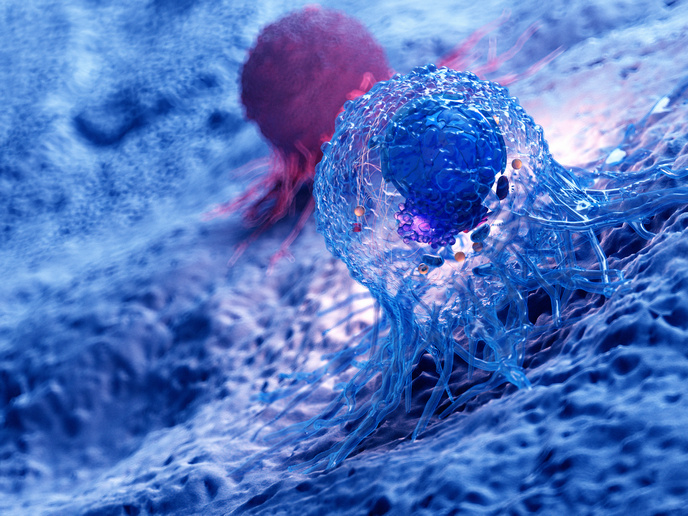Targeting cancer metastasis with nanomedicine
Metastatic cancer is a complex disease, which is difficult to treat and varies widely between patients. While primary tumours can often be removed through surgery, metastatic cancer lesions affect multiple organs and spread through various compartments in the body, complicating the treatment protocols and making curative treatments difficult. Nanomedicine presents a promising therapeutic modality, through improved delivery of drugs to specific target sites. Current drug therapies are often not entirely efficient and cause certain complications, ranging from mild to severe or even life-threatening side effects. However, other side effects such as hair loss can be alleviated, contributing to an improvement in patient benefit. “When it comes to more efficient treatment of cancer with nanomedicines, we are gradually identifying critical steps that need to be taken into account to ensure better patient outcomes, such as the development of probes and protocols to allow for patient selection,” explains Twan Lammers(opens in new window), professor of Medicine at RWTH Aachen University Hospital. In the Meta-Targeting project, which was funded by the European Research Council(opens in new window), Lammers and his colleagues developed such methods for patient selection(opens in new window), as well as novel nanomedicine-based combination treatments(opens in new window) to improve efficiency and reduce side effects. To enable both within a single intravenous injection, the project designed nanocapsules loaded with multiple drugs and with an imaging agent. “However,” Lammers says, “to what extent nanomedicines really improve accumulation in metastatic lesions is poorly understood, and systematic studies are lacking. That is why we performed this research.”
Developing new drug-containing nanocapsules
The team focused on new designs for drug-delivering nanocapsules known as polymeric micelles (PMs). The centre of the PM repels water and is loaded with multiple hydrophobic drugs, while the outer shell is highly water-soluble, making the drug formulation stable and useful in biological environments such as the human body. Previously translated PMs (developed by Lammers’ close collaborators Cristianne Rijcken and Wim Hennink) have had the drugs chemically bound to the PM core, to prevent the drug from leaking out before it reaches the target. In the Meta-Targeting project, the researchers focused on a newer micelle platform in which the polymers and drugs are held together via physical interactions, particularly via so-called pi electrons. “This makes the platform somewhat simpler to prepare and purify, and also easier to load with different types of drugs, including with drug combinations and imaging agents,” adds Lammers.
Promising results in multidrug delivery, tumour priming and metastasis targeting
The team has already published several papers on this part of their work, such as a proof of concept for multidrug loading in physically stabilised PMs(opens in new window), including initial experimental evidence(opens in new window) for improved treatment efficacy in tough-to-treat tumours. Additional progress was made in materials and methods to prime tumours and metastases for better drug delivery, via combinations of advanced microbubble designs(opens in new window) with ultrasound, and pretreatment of high fibrotic tumours with nano-formulated corticosteroids(opens in new window). And in another study , experimental evidence shows that chemically crosslinked PMs loaded with a taxane drug and imaging agents can efficiently target and treat metastases in mice with triple-negative breast cancer. The team will continue to explore the potential of their PMs and develop other novel treatments to target triple-negative breast cancer, along with other hard-to-treat malignancies. Two submissions for follow-up EU funding are already under way.







